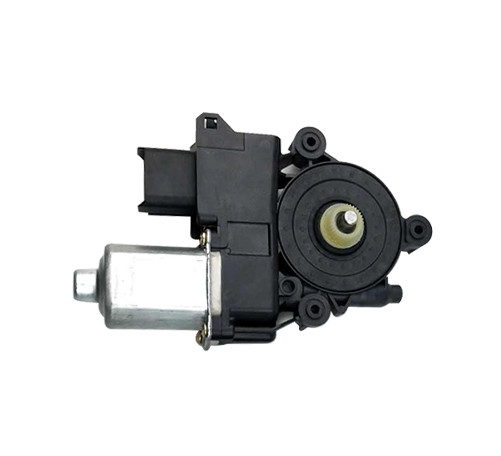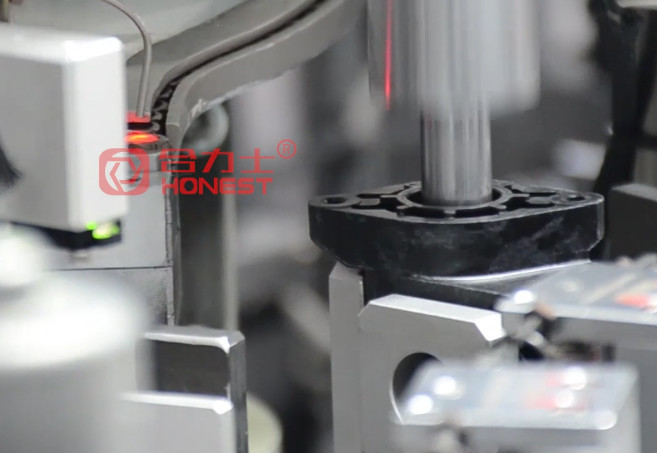A gearbox is a mechanism that uses the principle of gear transmission to alter rotational speed and torque. It consists of many gears, axles, bearings, and other components. It can realize different outputs of speed and torque by different gear combinations, and meet different working requirements by providing different outputs of speed and torque.
The Main Components of the Gearbox
1. Gear: A gear is the core component of a gearbox, which transmits power and motion through meshing. It can be categorized into various types such as spur gears, helical gears, and so on, based on design and application differences;
2. Axis: An axis is the component that supports and positions the gear. It can be the input axis, output axis, and intermediate axis. The input axis receives power from an external source, the output axis transmits power to subsequent mechanical components, and the intermediate axis connects different gear sets;
3. Bearing: A bearing supports and reduces friction to make the gearbox operate smoothly. The bearing can be a either rolling element or a sliding bearing;
4. Housing: The housing is the external structure of the gearbox. It usually consists of cast iron or steel, protecting the internal components and providing structural support;
5. Seals: Seals prevent lubricant leakage and keep external contaminants from entering the gearbox;
6. Lubrication System: It ensures proper lubrication of gears and bearings to minimize wear and facilitate heat dissipation. It may include lubricating oil, grease, as well as pumps and nozzles;
7. Coupling: The couplings are used to connect the input axis and external drive sources, such as motors or internal combustion engines;
8. Gear Adjustments and Fixing Devices: These devices are used to adjust the position and meshing clearance of the gears, ensuring proper gear engagement and transmission efficiency.
The design and structure of a gearbox can vary according to performance requirements and application fields.

The Classifications of the Gear
The gears are usually classified according to the orientation of their axes, and are categorized into the following three main types:
A. Parallel Axis Gears: spur gears, helical gears, internal gears, racks, and helical racks;
B. Intersecting Axis Gears: straight-tooth bevel gears, curved-tooth bevel gears, and zerol bevel gears;
C. Skew Axis Gears: Skew-axis helical gears, worm gears worm wheels, and hypoid gears.
When selecting a gearbox, it is essential to choose the most appropriate type of gear based on the actual application needs. The design and selection of a gearbox should be based on the characteristics of different gears as well as the requirements of the transmission system.
The Features of the Gearbox
1. Diverse Gear Ratios: Gearbox achieve a variety of gear ratios through combinations of gears with different sizes and tooth numbers, allowing for precise control over output speed and torque;
2. Compact Size with High Torque Output: Designed with compactness in mind, gearboxes deliver substantial torque output within a limited space, conserving area while providing power;
3. Multi-Stage Reduction Gearing: By tandem multi-stage gears, gearboxes can achieve continuous speed reduction within a single unit, significantly lowering rotational speed and increasing output torque;
4. High Load Capacity: Gearbox designs are engineered to withstand substantial axial and radial loads, making them suitable for heavy-load working environments;
5. High Transmission Efficiency: In parallel and intersecting axis gearboxes, gear meshing primarily involves rolling contact, which reduces energy loss and enhances transmission efficiency;
6. Reversibility: Some gearboxes incorporate a self-locking feature, enabling them to hold position when stopped and preventing reverse drive;
7. Robust Adaptability: Gearboxes are capable of withstanding a range of harsh environmental conditions, including high and low temperatures, as well as humidity.
These features make gearboxes an essential component in a wide array of applications, providing reliable and efficient power transmission solutions.

The Functionalities of the Gearbox
1. Speed and Torque Adjustment: Gearboxes can adjust the input speed and torque to produce varying output speeds and torques, catering to diverse operational requirements;
2. Direction Change: By combining and arranging gears in specific ways, gearboxes can alter the rotational direction between the input and output shafts, enhancing the flexibility of mechanical design;
3. Precise Control: Gearboxes serve as isolating devices, shielding motors from load fluctuations and mechanical impacts, while also protecting equipment from external contamination and damage;
4. Protective Function: Gearboxes serve as isolating devices, shielding motors form load fluctuations and mechanical impacts, while also protecting equipment from external contamination and damage;
5. Power Transmission: Gearboxes facilitate the transfer of power between different mechanical components, enabling efficient operation of complex mechanical systems.
The Considerations in Gearbox Design
1. Load Analysis: Identify the type of loads the gearbox will endure and calculate the required torque and power;
2. Material Selection: Choose appropriate manufacturing materials based on load, speed, environment, and application field;
3. Gear Design: Determine the type of gear needed and select the gear type best suited for the application requirements;
4. Bearing Selection: Choose the right type and size of bearings to support shafts and absorb loads;
5. Gearbox Layout: Establish the layout and dimensions of the gearbox to accommodate spatial constraints and installation requirements;
6. Lubrication and Sealing: Design an appropriate lubrication system to reduce wear on gears and bearings, and select suitable sealing methods to prevent oil leaks and contamination, thereby extending lifespan;
7. Thermal Management: Address heat generation and dissipation during gearbox operation to ensure safe temperature operation and avoid performance degradation or damage due to overheating;
8. Noise and Vibration Control: Optimize gearbox design to minimize noise and vibration, enhancing the comfort and reliability of system operation;
9. Maintenance and Repair: Consider maintenance requirements of the gearbox and design for easy inspection, repair, and component replacement;
10. Safety Standards: Pay attention to the implementation standards of different regions to ensure the design complies with relevant safety standards and regulations.

The Applications of Gearbox in the Automotive Industry:
Gearboxes play a crucial role in the power transmission, steering, and auxiliary systems of vehicles. Here are some applications of gearboxes in the automotive field:
1. Transmission: The vehicle's transmission is a key application of gearboxes, utilizing combinations of gears of different sizes to alter the torque and speed output of the engine to meet various driving conditions and speed demands;
2. Differential: The differential, located at the end of the drive shaft, is a gearbox that allows wheels to rotate at different speeds, which is essential for vehicle stability during turns;
3. Steering System: In hydraulic power steering systems, gearboxes convert the driver's steering actions into output force for the hydraulic pump, reducing the effort required to turn the steering wheel;
4. Drive Shaft: The drive shaft connects the transmission to the drive wheels and typically consists of two or more gears that transfer power from the transmission to the wheels;
5. Engine Internals: Within the engine, gearboxes can be used to control the operation of the engine.
If you are interested in gearbox motor assembly line or need customized solutions and quotes, please contact us now.






